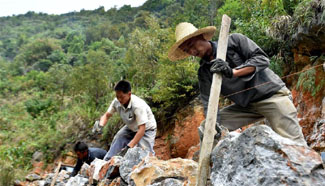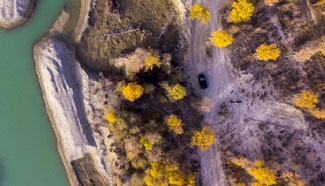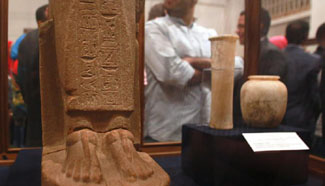CHANGSHA, Oct. 24 (Xinhua) -- More than 130 experts from around China and abroad gathered in the central province of Hunan, focusing on the centuries-old Chinese Tusi chieftain system and culture.
The Tusi system is an ancient chieftain system adopted by feudal Chinese emperors to govern ethnic minorities in the southwest from the 13th to the early 20th century. "Tusi" refers to a tribal leader appointed as an imperial official by the central government.
During a seminar from Oct. 21 to 23 in Yongshun County, Tujia-Miao Autonomous Prefecture of Xiangxi, experts discussed issues such as protection and application of the Tusi legacy. The seminar collected over 120 essays on Tusi culture from both Chinese and foreign writers.
The Yongshun old Tusi fortress has a history dating back more than 600 years. Lying on the bank of a river, it is considered the largest, oldest and best preserved Tusi fortress in China.
The Yongshun old Tusi fortress, the ruins of Hailongtun castle in Guizhou Province and the Tangya Tusi fortress in Hubei Province were added to the World Cultural Heritage List in July 2015.
Li Ping, vice head of Xiangxi prefecture, said in order to better protect the old Tusi structures, authorities should balance the relationships between protection and tourism, protection and exploration, and properly deal with the interests of local residents.










